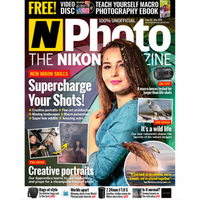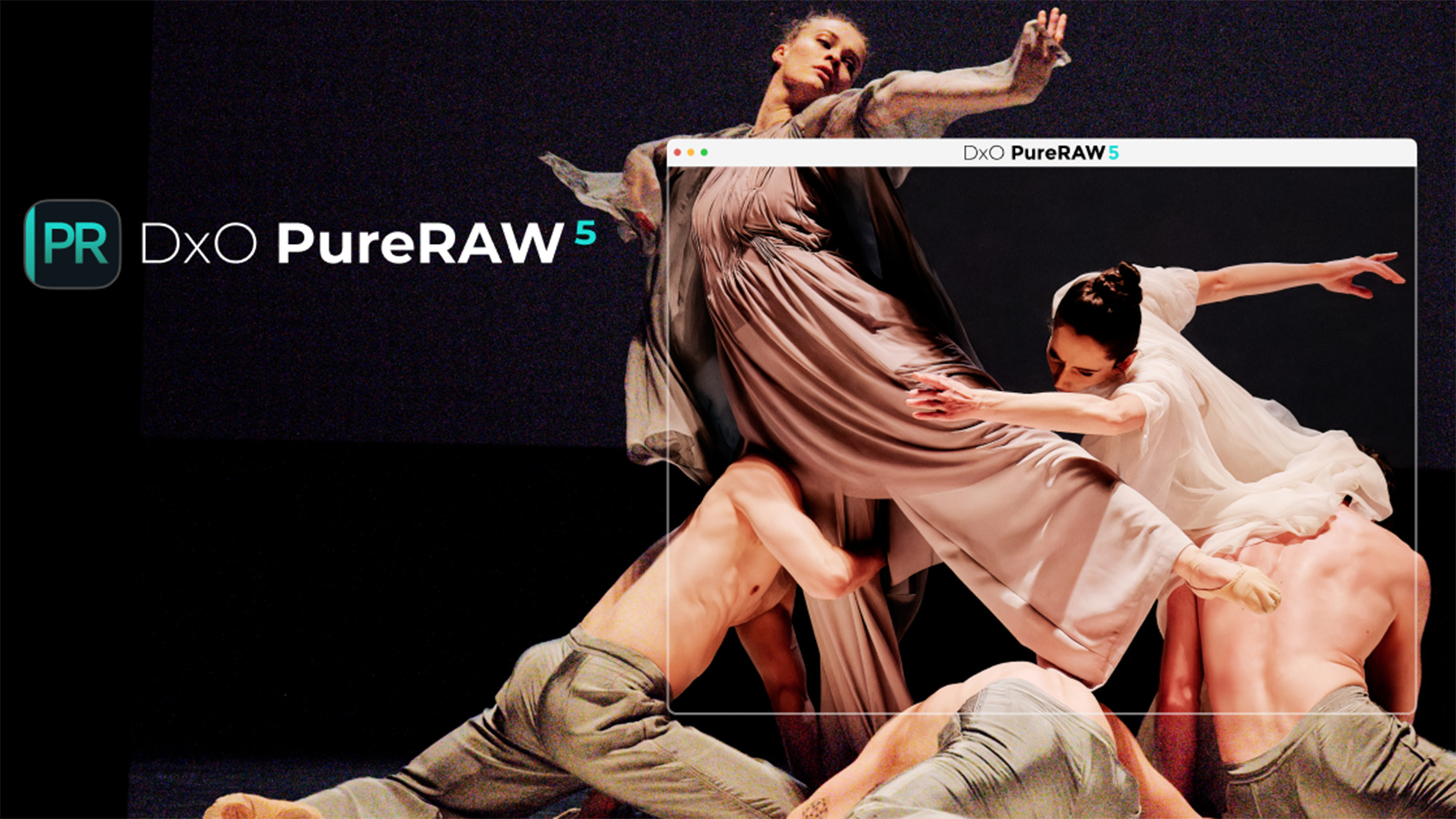Home photography ideas: Magic macro shots with wide angles and lighting tricks
Enhance your macro photography with unusual focal lengths and lighting tricks
Watch video: Home photography idea: Macro with wide angles and lighting
Photography projects at home
• Home photography ideas
Useful home photography kit
• Best tripods
• Best lighting kits
• Best reflectors
• Best macro lenses
Seen in close-up, the world reveals all kinds of hitherto unnoticed details, colors and textures. We can use an array of tricks to enhance these close-up details, and in this project we’ll explore a few of those options.
For starters, we’ll experiment with different focal length macro lenses. A typical focal length for macro lenses is around 100mm, but you can also find more unusual lenses out there – like the Laowa 15mm f/4 1:1 Wide Angle Macro Lens used for the snail photo here. It’s a crazy lens that’s a real challenge to use, but offers a captivating and rewarding perspective for close-up images.
As well as altering our perspective, we can also experiment with lighting. On a bright sunny day there’s plenty of light to play with, but it’s not always the best quality for close-up photography. We’ll look at how to manipulate the daylight with a reflector in order to soften and diffuse the harsh sunlight.
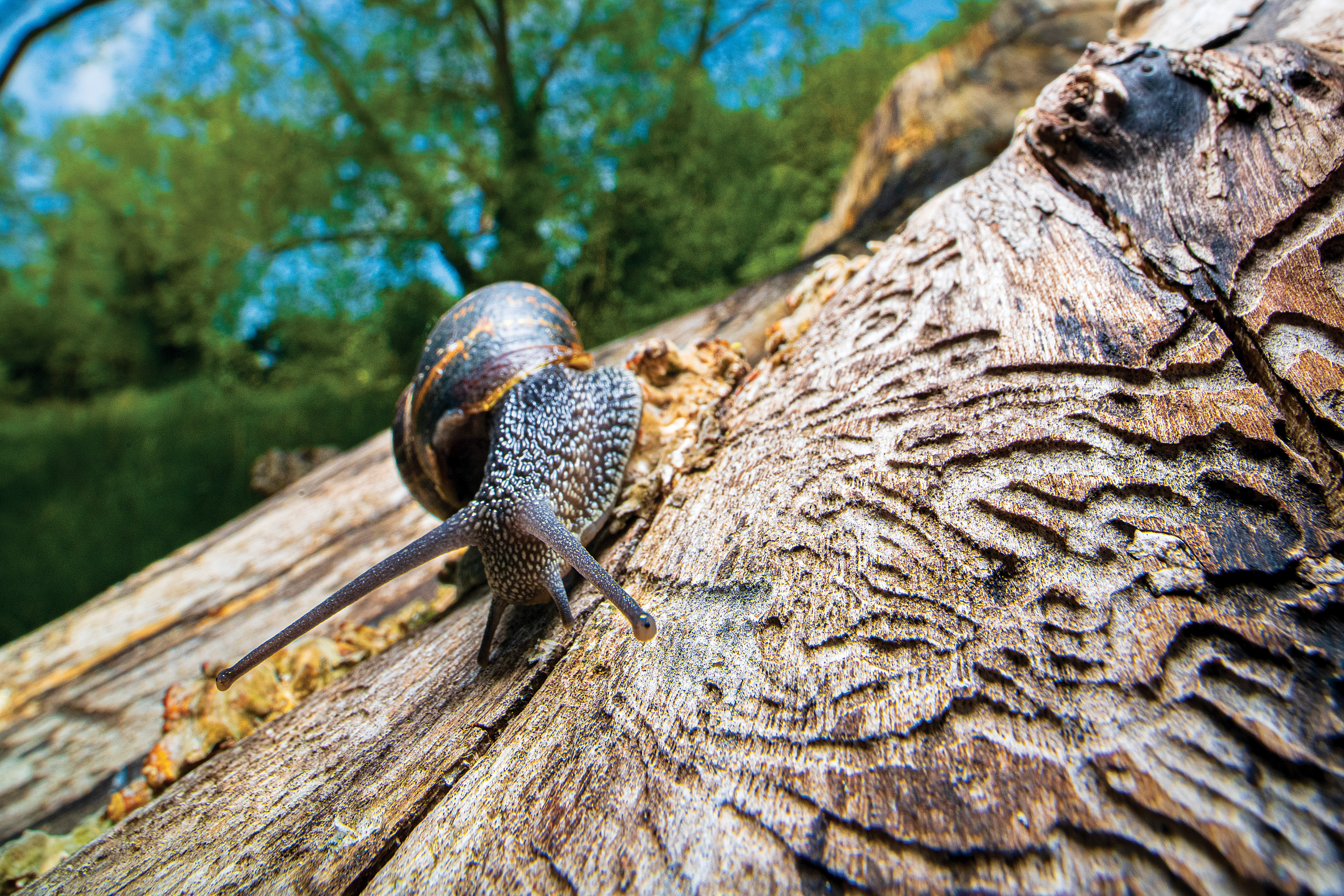
We’ll also explain how to add in illumination of your own using a speed light. Like sunlight, direct flash from a speed light can be harsh – so we’ll make use of a little softbox to achieve more attractive results.
There are lots of other techniques you can employ to enhance the wonderful subjects, details and textures on offer in the close-up world. From choosing the right aperture to hunting for bugs and spraying glycerin-infused water, we’ll look at the tricks of the trade…
• Best online photography courses
Macro essentials
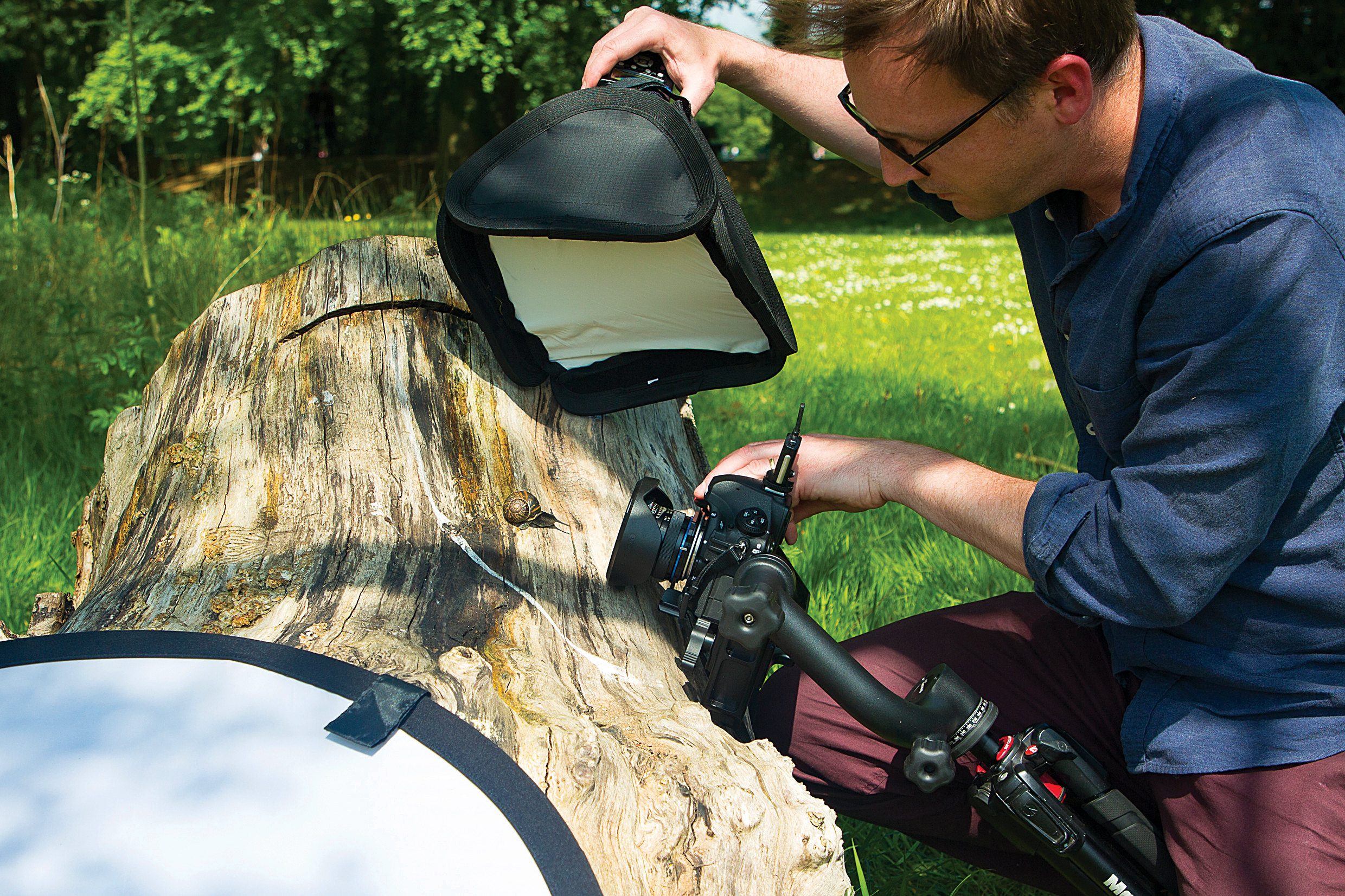
01 Macro lens
A macro lens enables you to frame close-up subjects at 1:1 view, meaning that the size of the subject can be recorded in its actual size on the image sensor. They come in various focal lengths; at shorter lengths, like the 15mm used here, the subject has to be very close to the lens for a true 1:1 capture.
• Best macro lenses
02 Speedlight
A speed light helps to lift your subject and bring out the colors. Fired directly, the flash can be too harsh – a small softbox attachment results in more diffuse, more natural light. Some photographers like to attach the flash to the camera with a bracket, but if not you can simply hold it or use a stand.
03 5-in-1 reflector
This is very useful for all kinds of photography, including macro. Held opposite the light source, it can be used to bounce light back into the shadows. Alternatively, it can also provide shade when the sunlight is too harsh, and the diffusion panel can be useful for softening sunlight or flash.
04 Tripod
A tripod frees up your hands and enables you to perfect your focusing. Often when focusing it’s easiest to move the camera back and forth slightly. A focus rack is ideal for this, but if you don’t have one then a sliding tripod plate – like the one on our gimbal head here – can work just as well.
05 Aperture control
Your aperture is key in macro photography. At wide apertures, like f/4, the depth of field might only stretch to a few millimeters, so often it’s better to stop down to f/8 or more, to ensure a decent area of sharpness across your subject. We’re in manual mode at f/11, 1/250 sec, ISO640.
06 Live View focusing
Using Live View to compose and focus your macro shots is often the easiest way, especially if your subject is static, as you can zoom in to the Live View display and manually fine-tune the focusing. If your camera has focus peaking it can overlay highlights on sharp areas, which can be extremely helpful.
Macro tips
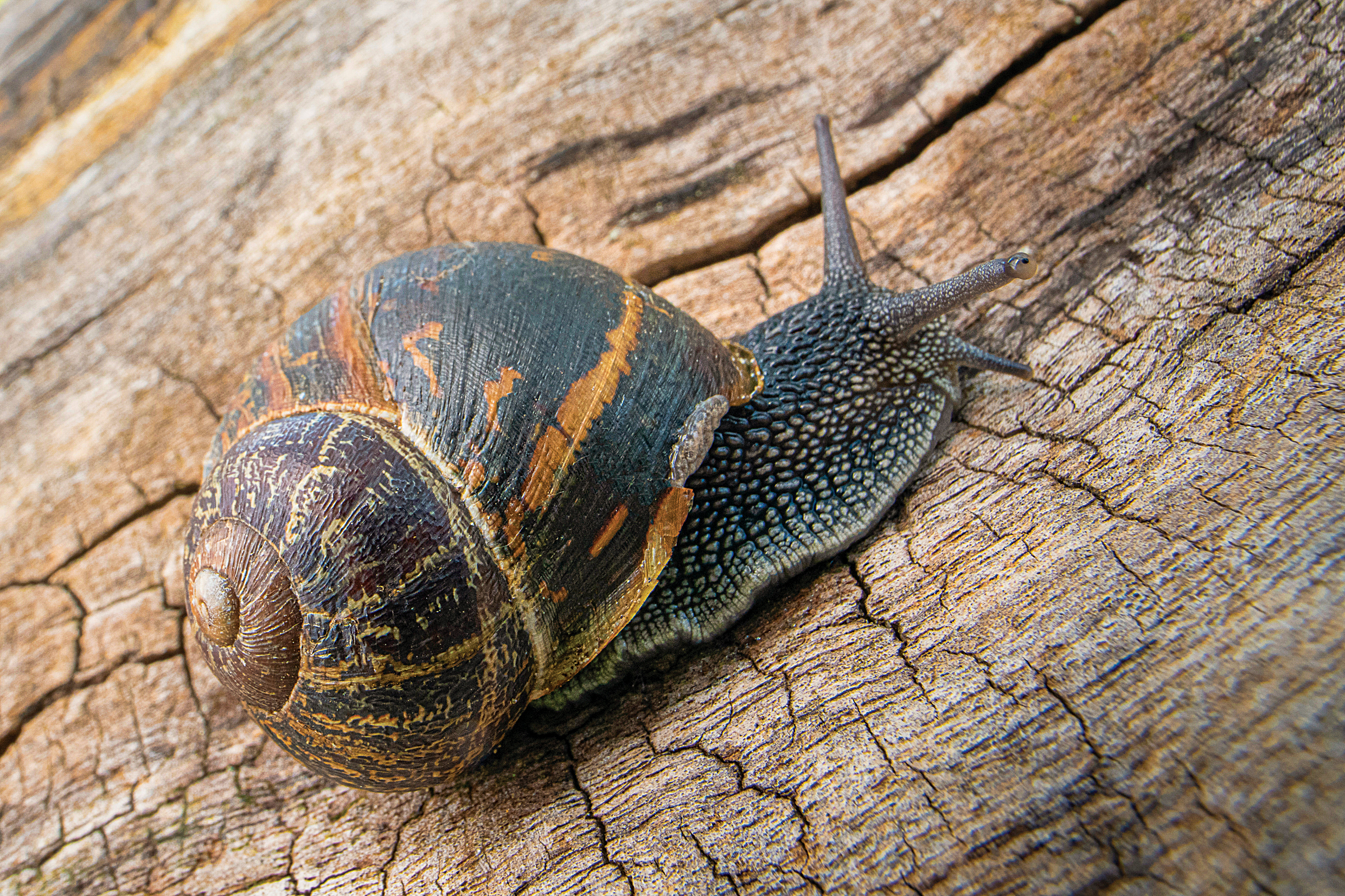
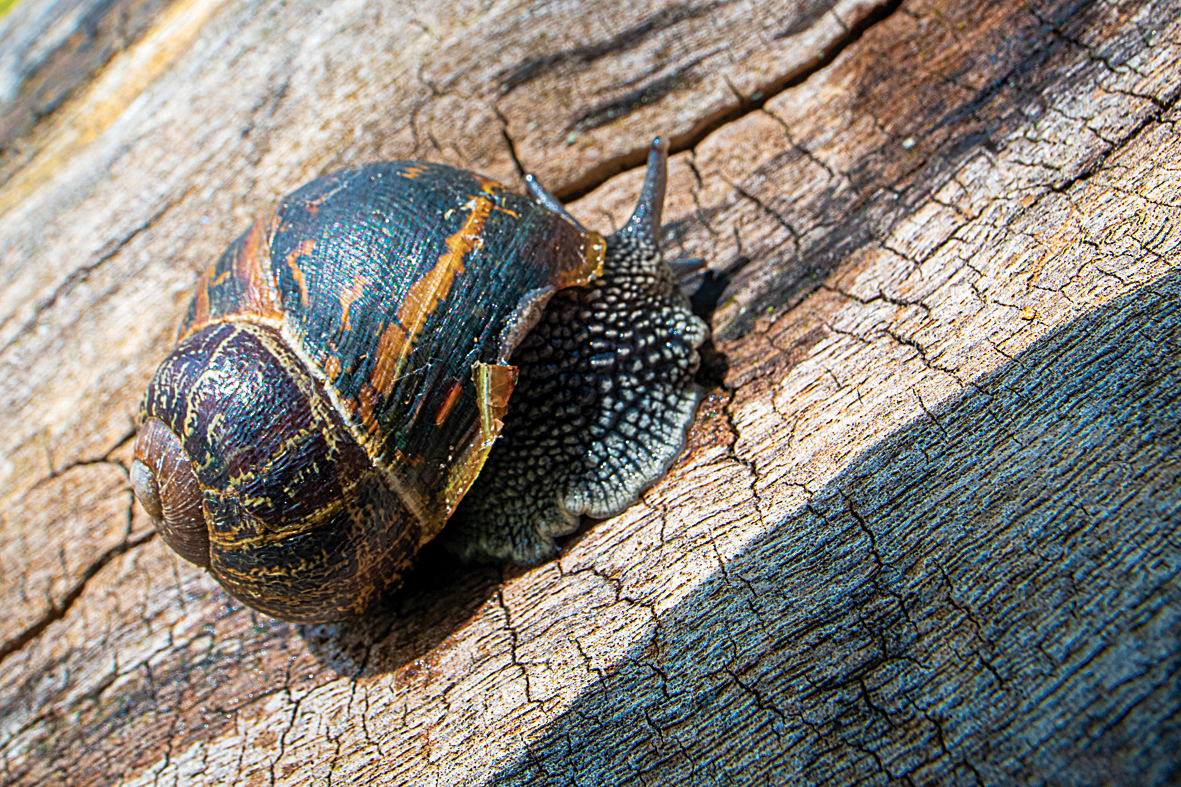
01 Diffuse the sunlight
Direct sunlight is often problematic; as shown in the second image, it causes high contrast with overly bright highlights and deep shadows. Often delicate, soft light is better, as it more gently reveals the form and color of the subject. With macro work, we needn’t wait for a cloud or some shade – we can make our own shade!
A simple 5-in-1 reflector is ideal for this. By zipping off the reflector sleeve and holding the internal diffusion panel between the sun and our subject we can diffuse the sunlight while not blocking it out completely – which results in wonderful, soft, even illumination.
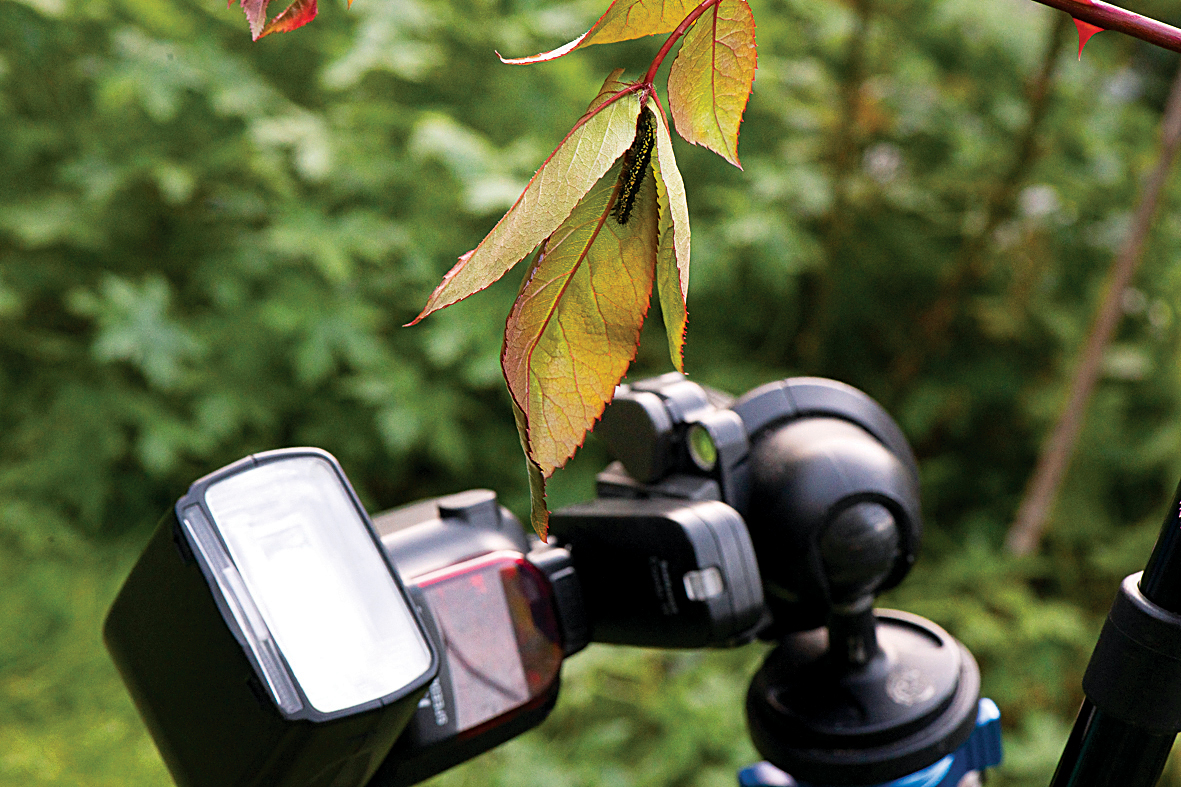

02 Off-camera flash
An off-camera flash is a great addition to your kitbag when you’re out shooting macro. When doing so, you will often want to stick to narrower apertures to maximize depth of field – usually between f/11 and f/22 is ideal. But this does inevitably mean that you’ll require a bit more light, which the flash can thankfully provide us with.
But it’s not just about quantity of light; the flash also enables us to get creative with the direction of it. By using a remote trigger (or a sync cable), we can place it behind our subject for elegant backlighting through a leaf. However, too much flash can look unnatural. For the best results, keep the flash power fairly low to harmonize with the ambient light you have available.
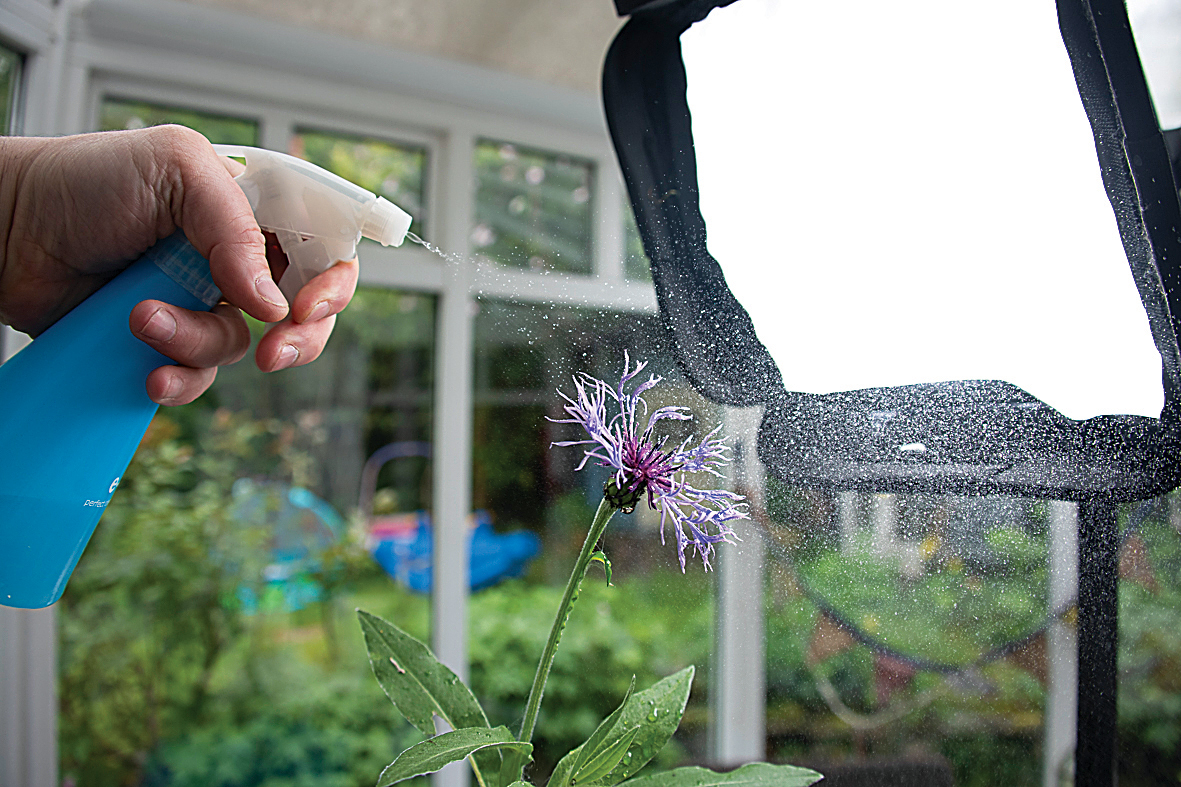
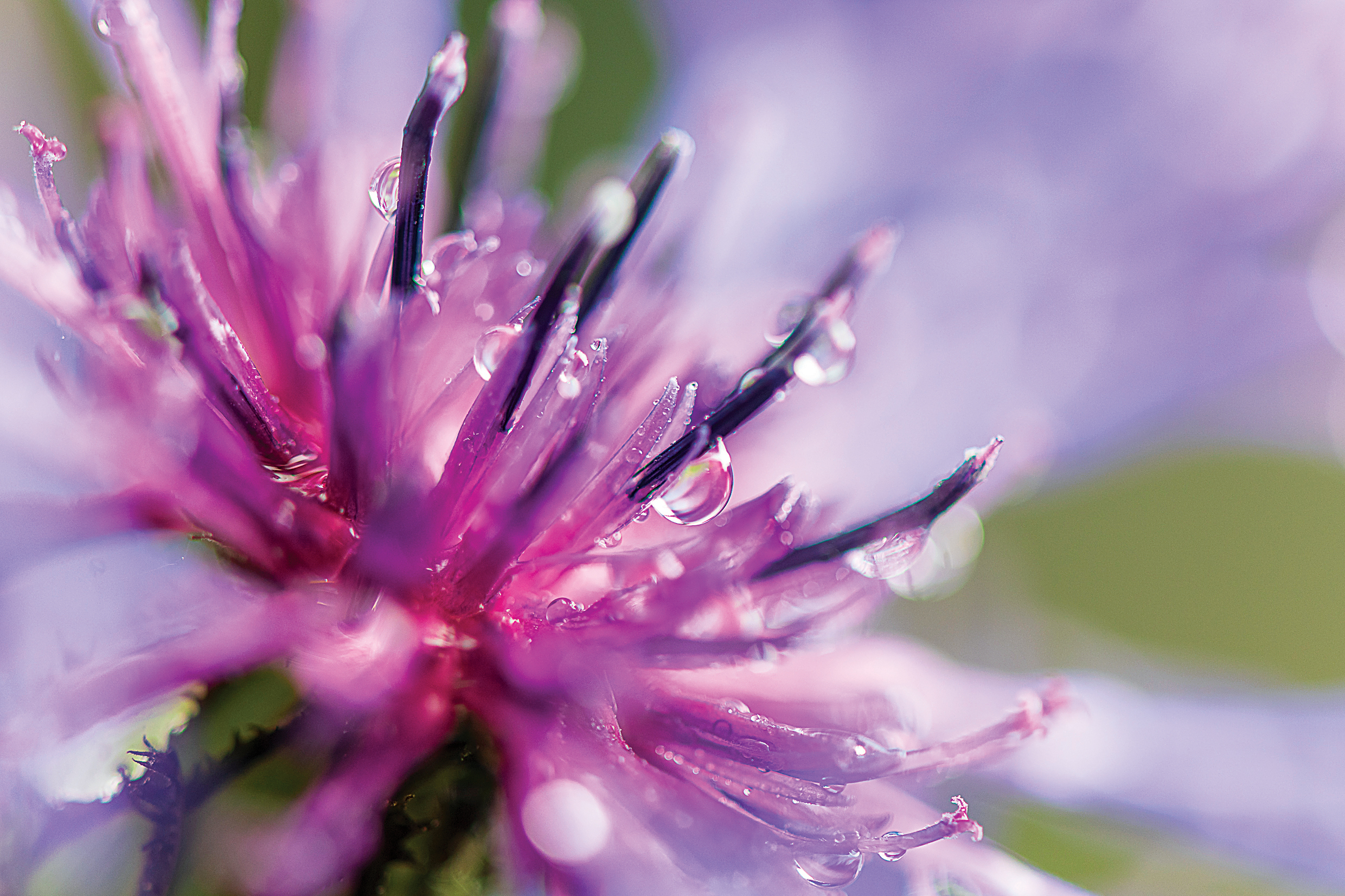
03 Water drops
Water can be a great addition to your macro shots; the bright highlights and delicate curves that it adds can really elevate flower photos. To get the look of fresh rainfall, we can simply use a spray bottle filled with water. Try spraying the background plants, too, as the little drops will catch and reflect the light, resulting in beautiful bokeh highlights in the blurred background behind your subject.
If you find that the water runs off your plant too quickly, try mixing it with glycerin. This sticky substance makes the water more durable and glutinous, while still resulting in lovely droplets.
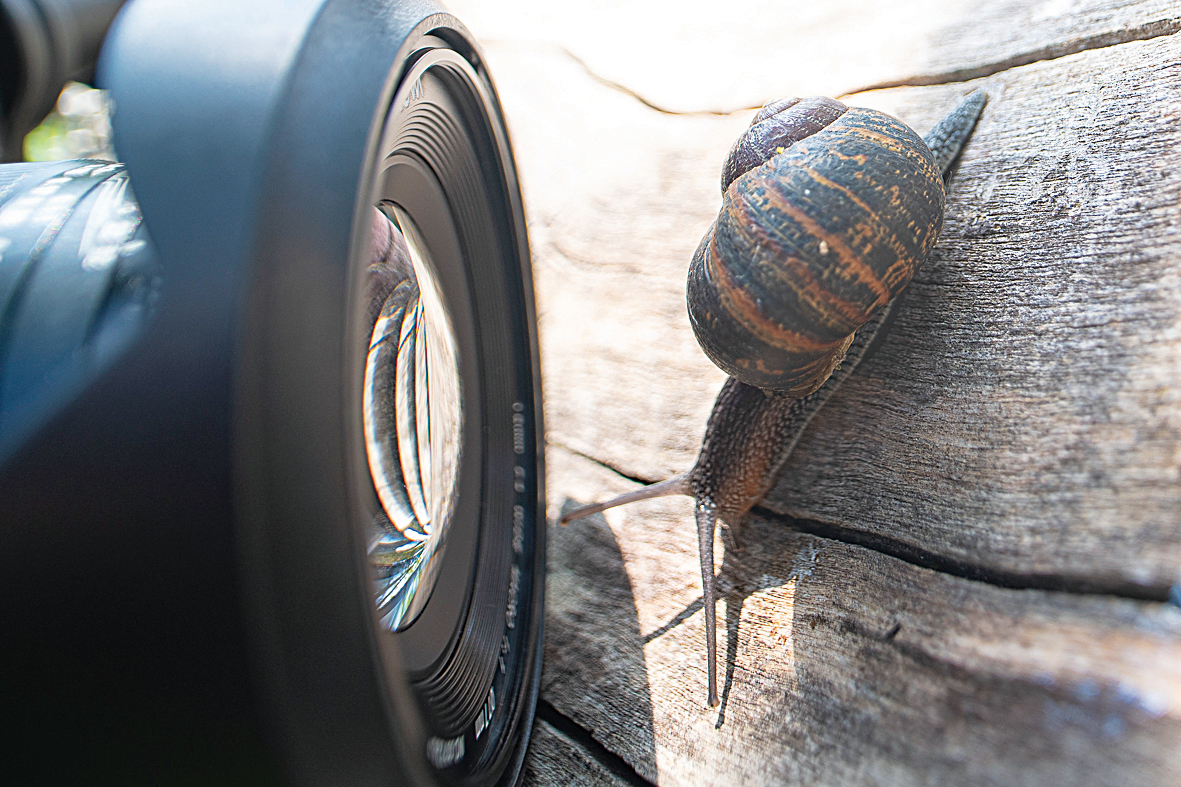
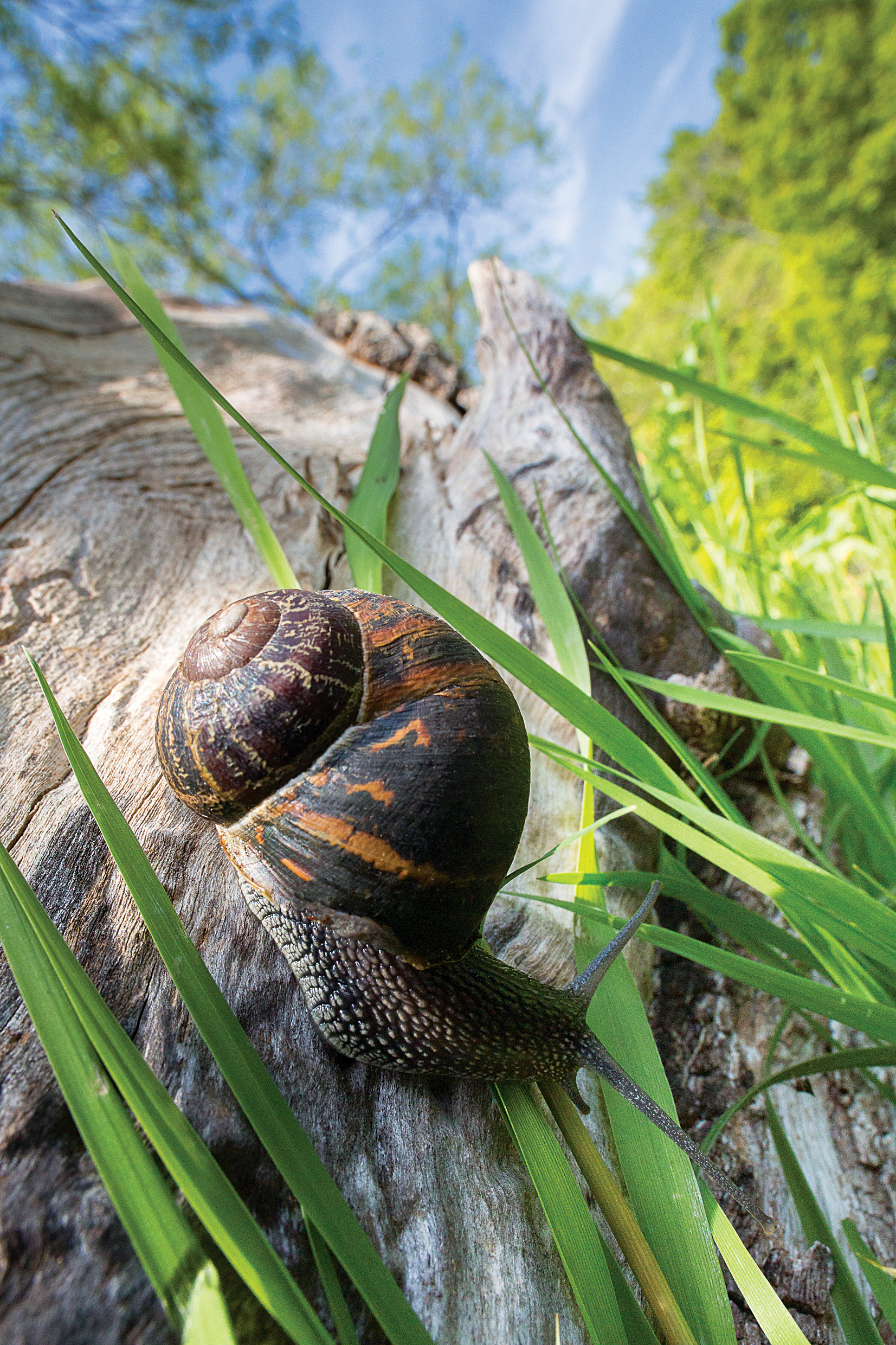
04 Fresh perspectives
Macro lenses come in all kinds of focal lengths. Most common are those around 100mm, but if you want to try an unusual perspective, you can seek out other lenses, like the specialist Laowa 15mm f/4 1:1 Wide Angle Macro used here. It’s a super-wide angle optic, and to get close to the subject it needs to be almost pressing against the front element.
This can be hard with timid subjects but, for more placid creatures and plants, the lens offers a unique field of view by showing both the subject and its surroundings. This sets it apart from other macros, where a background is mostly blur.
N-Photo: The Nikon Magazine is a monthly publication that's entirely dedicated to Nikon users. For the best news, reviews, projects and more, subscribe to N-Photo today!
Read more:
5 things to know before buying a macro lens
The best macro lenses: get closer to your subjects than ever before!
Best ringflash for macro photography
Get the Digital Camera World Newsletter
The best camera deals, reviews, product advice, and unmissable photography news, direct to your inbox!
The lead technique writer on Digital Camera Magazine, PhotoPlus: The Canon Magazine and N-Photo: The Nikon Magazine, James is a fantastic general practice photographer with an enviable array of skills across every genre of photography.
Whether it's flash photography techniques like stroboscopic portraits, astrophotography projects like photographing the Northern Lights, or turning sound into art by making paint dance on a set of speakers, James' tutorials and projects are as creative as they are enjoyable.
He's also a wizard at the dark arts of Photoshop, Lightroom and Affinity Photo, and is capable of some genuine black magic in the digital darkroom, making him one of the leading authorities on photo editing software and techniques.
